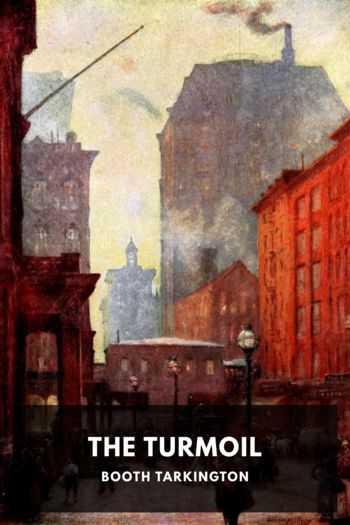author - "Booth Tarkington"

Description The Magnificent Ambersons, winner of the 1919 Pulitzer prize, is considered by many to be Booth Tarkington’s finest novel and an American classic. The story is set in the Midwest, where George, the spoiled and oblivious scion of an old-money family, must cope with their waning fortunes and the rise of industry barons in the automobile age. George’s antiheroic struggles with modernity encapsulate a greater theme of change and renewal—specifically, the very American notion of a small

ture upon his dome as well as the colour decorations!""'Tis true, my ancient?" another asked of me. I made no repartee, continuing to sit with my chin dependent upon my cravat, but with things not the same in my heart as formerly to the arrival of that grey pongee, the grey glove, and the beautiful voice. Since King Charles the Mad, in Paris no one has been completely free from lunacy while the spring-time is happening. There is something in the sun and the banks of the Seine.

Description National Avenue, originally titled The Midlander, is Booth Tarkington’s final entry in his Growth Trilogy. Like the previous entries in the series, National Avenue addresses the rapid industrialization of small-town America at the turn of the century, and the socioeconomic changes that such change brings with it. Dan Oliphant and his brother Harlan are the children of a wealthy small-town businessman. Harlan is a traditional upper-class man—affecting an accent, dressing for dinner,

Description Bibbs is the dreamy, sensitive son of Mr. Sheridan, a cigar-chomping, larger-than-life businessman in the turn-of-the-century American Midwest. Sheridan made his fortune in the rapid industrialization that was overtaking the small towns and cities of America, but Bibbs—named so “mainly through lack of imagination on his mother’s part”—is too sickly to help his father in Sheridan’s relentless quest for “Bigness.” The Sheridan family moves to a house next door to the old-money

Description The Magnificent Ambersons, winner of the 1919 Pulitzer prize, is considered by many to be Booth Tarkington’s finest novel and an American classic. The story is set in the Midwest, where George, the spoiled and oblivious scion of an old-money family, must cope with their waning fortunes and the rise of industry barons in the automobile age. George’s antiheroic struggles with modernity encapsulate a greater theme of change and renewal—specifically, the very American notion of a small

ture upon his dome as well as the colour decorations!""'Tis true, my ancient?" another asked of me. I made no repartee, continuing to sit with my chin dependent upon my cravat, but with things not the same in my heart as formerly to the arrival of that grey pongee, the grey glove, and the beautiful voice. Since King Charles the Mad, in Paris no one has been completely free from lunacy while the spring-time is happening. There is something in the sun and the banks of the Seine.

Description National Avenue, originally titled The Midlander, is Booth Tarkington’s final entry in his Growth Trilogy. Like the previous entries in the series, National Avenue addresses the rapid industrialization of small-town America at the turn of the century, and the socioeconomic changes that such change brings with it. Dan Oliphant and his brother Harlan are the children of a wealthy small-town businessman. Harlan is a traditional upper-class man—affecting an accent, dressing for dinner,

Description Bibbs is the dreamy, sensitive son of Mr. Sheridan, a cigar-chomping, larger-than-life businessman in the turn-of-the-century American Midwest. Sheridan made his fortune in the rapid industrialization that was overtaking the small towns and cities of America, but Bibbs—named so “mainly through lack of imagination on his mother’s part”—is too sickly to help his father in Sheridan’s relentless quest for “Bigness.” The Sheridan family moves to a house next door to the old-money